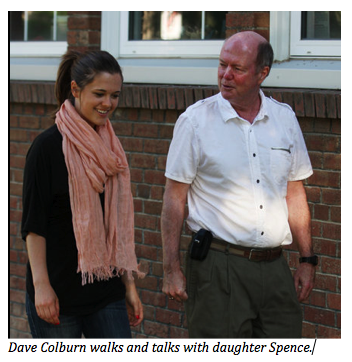By Dave Colburn
When the Edmonton Public School Board ended its two year moratorium on school closures in Nov. 2012 it generated a good deal of public discussion. Parents and communities wanted to know what this new world would mean for schools with falling enrolment. People speculated on whether this moratorium had achieved anything and offered views on what the Board should do next.
The media analyzed closures, infrastructure and the board’s responsibilities. Our own planning department weighed in and talked of infrastructure challenges and different strategies to deal with closures. Even the City of Calgary saw media reporting their City Council wanted to play a greater role in closure decisions.
As a three-term trustee on the board, and former Board Chair, I have seen my share of school closures. The district closed 14 schools in my first 6 years on the board. Closures that reached into the inner city in the spring of 2010 (McCauley, Parkdale and Eastwood) were particularly divisive for the board and the city. People and organizations that had never taken a position on closures addressed the board in an historic six and half hour marathon Board meeting on April 13, 2010.
At the end of the evening a majority of the board had approved all five closure recommendations. I opposed those recommendations. In the weeks that followed I was increasingly convinced that the city had reached a saturation point with closures.
Early in my 2010 campaign for re-election I called for a moratorium on closures. Fairly quickly, school closures became a municipal election issue. Mayor Stephen Mandel, standing between both the public and Catholic board chairs, in the summer of 2010, called for new solutions. Trustee candidates began to openly discuss closures and commit to a moratorium, if elected. On November 30th, 2010, following a record turnover on the board that saw six new trustees elected, the board approved a two year moratorium on school closures.
In addition to a respite for communities facing possible closures, the board was also determined to undertake an exhaustive analysis of closures in order to build support for communities and lessen the likelihood of closure. A moratorium committee presented a report on school viability and closures, and a series of public meetings was held over the next year to discuss the findings of this report. This board response was unprecedented. Never before had the issue of school closures been so thoroughly and publicly analyzed. On Jan. 31, 2012, a series of recommendations, submitted by the committee, were approved by the board. As a member of that committee, I believe we gathered all possible information on closures, brought our best intelligence to the table, transparently engaged our public, and made recommendations that will create better supports for schools. I believe the public would support this work.
Lack of joint planning between the city and the district, sprawl created by the City of Edmonton’s growth strategies and inadequate, often arbitrary funding from the province all create enormous pressure on the district to close schools. In the winter of 2010, I successfully introduced a motion to begin tri-level discussions with the city and province on school closures and related issues. At first meeting of these three levels of government a senior minister described the initiative as “overdue and a new model of urban planning.”
The board moratorium committee, in Jan. 2012, recommended both the Catholic and public boards meet annually with the city and province to discuss joint planning. Following the mayor’s Community Sustainability Task Force, the Elevate report, released in Feb. 2012, made its top recommendation to “bring together the four jurisdictions (federal, provincial, municipal, school boards) to create innovative partnerships….to assemble a new urban agenda.”
So is anything really different? I would say yes, there are encouraging changes. It is reasonable to expect that three levels of government will be involved in future urban planning.
Schools will be closed in the future. How can this be done respecting the needs and views of communities? In an Andrea Sands article in the Edmonton Journal on January 13th, 2013, Edmonton Public’s Director of Planning, Dr. Lorne Parker spoke at length about the replacement school model. I very much like this model. The idea would see a number of schools (say 3 or 4) in close proximity to each other be closed, and, in return, a new school built to serve communities experiencing closure in the area. It would require gov’t commitment to fund a new school in return for closures. It would require authentic public consultation. Many groupings of schools in the district that would qualify for this approach.
Finally, I think this board’s extraordinary response to community concerns over school closures has reaffirmed, in a very public manner, the importance of community in any school closure decision. I am hopeful that we will never see again, as we did in 2010, a school closure discussion that does not mention the word community once.
——–
Dave Colburn is a three-term school trustee and former chairman of the Edmonton Public School Board who lives in Edmonton’s Bellevue neighborhood, one block from Bellevue School, which was closed in 2003. He is stepping down from the board. This is his debut blog post. You can read more at davecolburn.ca

